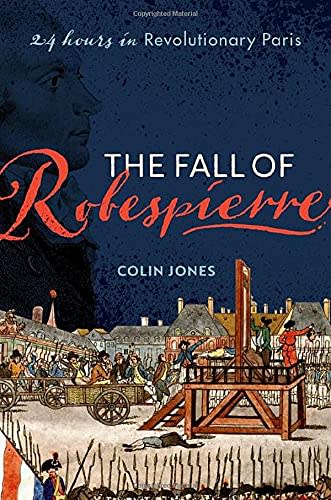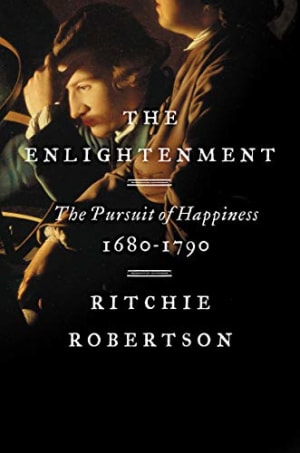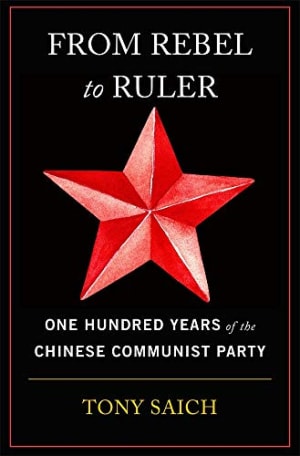GREAT CONSPIRACY. Today would have been one of the greatest events that France has ever known if conspiracy had had its way.
Celestin Guittard de Floriban
What had so shocked Parisian diarist Celestin Guittard de Floriban were the earth-shaking events of 27 July 1794 that culminated in the execution by guillotine of Maximillian Robespierre, who only 24 hours before had been at the height of power in Revolutionary France.
Diarist Floriban himself is a very ordinary sort of chap and far from the height of power, even if he happens to live relatively close to it in the South of the city of Paris. 69 years old, a widower and small time landlord, he keeps a diary of the ordinary events in his life and the goings on around him. For example: 24th July 1794 temperature 23 degrees, 36 people guillotined. 25th July 1794 23 degrees, 38 people guillotined. 26th July 1794 still 23 degrees, 52 people executed. When he makes love to his “long-term dining companion” Madame Sellier he will put an asterisk in the margin of his diary.
It was the events of 27 July 1794 – or 9 Thermidor Year II according to the new Revolutionary Calendar – that moved him to uncharacteristically dramatically record his view of the CONSPIRACY that had threatened all of France.
Colin Jones, author of “The Fall of Robespierre: 24 Hours in Revolutionary Paris” introduces us to citizen Floriban and many other people from the streets, squares and houses of Paris on 27 July.
The people have spoken
The great success of the book is that it mixes the ordinary and everyday (people going to work, noting the temperature, grumbling about wages) and the sensational (the revolt of the head of the National Guard, threatening the nations’ politicians with cannon, the outlawing of Robespierre). It also shows you just how far the shocking and unthinkable had been normalised – Floriban calmly noting down the day’s victims of the Guillotine as we saw, or government agents trying to boost the number of people on their execution lists to meet their tough targets.
By telling the story of Robespierre’s dramatic and unexpected fall from grace, Jones gives voice to all these people who in different ways contributed to his misfortune and death – and ultimately to a fundamental reshaping of French Revolutionary Government.
The smallest unit of history
Because it does this over a single day and in great detail we can see the processes of change operating at the level of individuals – which is after all the most granular unit of history. It is fascinating to trace what happens when those in power give orders, people decide whether or not to go along with them, and then… everything goes crazy. It made me much more attentive to what political power actually means – and the highly uncertain distinction between the illusion of power and its reality.
So what did happen?
After initially being a sort of French 18th Century lib-dem (ie progressive liberal) Robespierre became increasingly radical. This can be seen in his views on capital punishment: initially he was dead against it, before changing his mind and arguing forcefully for the execution of the French King XVI in January 1793. He then went on to push laws through parliament that made it relatively straightforward to kill pretty much anyone should the political accusations grow loud enough. The Law of Suspects of September 1793 came to interpret a political suspect as “Individuals who, without doing anything against freedom, have also done nothing for it.” The jails of Paris were bursting at the hinges even with the steady stream of victims to the executioners.
This radicalism and ruthlessness was viewed by many as principle and purity – revolutionary virtue – and Robespierre grew into a celebrity politician who in some ways embodied the Revolution. Certainly he seemed to consider himself its guardian.
A conspiracy, but of who?
So it was bad news for the rest of the political class when he decided in the summer of 1794 that a highly efficient foreign conspiracy originating in London had extended its tendrils into the heart of Paris. For a man of Robespierre’s level of paranoia there was only one thing for it: another round of political mass murder. And if anyone denied the existence of such a conspiracy… well that could only mean they were in on it too!
After a 6 week self-awarded holiday from government duties (he was on the notorious Committee for Public Safety but had absented himself) to mull over this nebulous yet deadly conspiracy, he re-emerged with a speech in the Convention (ie the national parliament) on 26 July 1794 in which he let everyone know that the game would soon be up and heads would roll. But because he didn’t name any names pretty much everybody was terrified that it could be them on the naughty list.
On the following day when a small group of politicians who felt they had nothing to lose started heckling Robespierre and his allies, this grew into an almost unanimous mob of parliamentarians baying for Robespierre’s arrest – probably much to their own surprise. A counter narrative was put in place: instead of a conspiracy against the Revolution, Robespierre himself was the conspirator: conspiring for his own installation as dictator of France. This sets the stage for the dramatic ebb and flow of support for and against Robespierre or the Convention across Paris.
On the edge of my train seat
The tension I experienced when reading this was remarkable. Even though I knew exactly how it was going to end – Robespierre’s death – the twists and turns had me totally enthralled. From one moment to the next Robespierre’s demise can seem inevitable… and then impossible. And it is not just Robespierre’s fate which hangs in the balance: anyone choosing the losing side in this contest is likely to be killed – and they know it.
It is also fascinating that Robespierre very quickly becomes a passive participant in the power struggles that are taking place around him, even where they take place in his name. You could see the “fall of Robespierre” as something that happens very early on in the day, the rest of the day is about the shifting mass of forces and people that his arrest has set in motion.
A structural masterclass
Colin Jones manipulates the presentation of these forces with aplomb. The events are carefully linked back to their sources: I was even able to partially fact-check one scene describing the moment of conception of a young master Miquet at around midnight on 27 July. But the evidence never intruded, and I was swept along by the story. Jones’ pacing has a cinematic quality: written in the present tense and starting out with longer meditative chapters, as the excitement builds the chapters get shorter and shorter, building to the crescendo: the storming of “Robespierre HQ” in the Maison Commune. I even found myself looking forward to my commute on the tube – an uninterrupted 40 minutes running around on the streets of late 18th Century Paris, eager to find out what was around the next corner.
Any negatives?
So what are the negatives? It does require some patience to register the names and roles of the many different people who feature in the story, and more so if you are approaching it from a standing start with little background in the period as I was. However for me that made the narrative more authentic: any big historical “event” will by definition involve lots of people.
A Reader Rant
The only other thing I would like to bring up probably belongs to the “reader rant” category: Jones has clearly paid a lot attention to the style of the book, making it accessible and drawing the reader in, but he seems to drop the ball on one of his main supporting characters. This is Tallien – the French revolutionary / politician who is credited with lighting the match in the Convention, forming a crucial political alliance the night before and initiating the heckling in parliament that rapidly snowballed into Robespierre’s arrest.
One of Tallien’s key motivations, we are led to believe, is to save his lover Theresa Cabarrus, an ex aristocrat who has been jailed by Robespierre and faces execution. We meet Cabarrus at the beginning of the book in jail, losing weight and becoming ill. Tallien smuggles her a note telling her to “Be as prudent as I’ll be brave and above all stay calm”. Then we see her again barricading herself into her cell in the fear of a prison massacre. Then inexplicably… nothing. Was she freed? Did she get guillotined anyway? Did she and Tallien establish a stable long-term relationship?
Maybe everyone else is fully up to speed with the Tallien-Cabarrus love story but not me: I wanted closure and didn’t get it! Luckily this is real life not fiction and I could find out what happened to her on the internet, but there is no romance in a Wikipedia page…
Conclusion
Now I’ve got that off my chest I am happy to say that overall this is a classic: living up to the title exactly, it does so with full marks for style and substance. As diarist Floriban might say: GREAT BOOK. If you have any interest in the French Revolution, or politics in general, or the “processes of history” you will find “The Fall of Robespierre” a riveting, rigorous and thought-provoking read.
Book details
(back to top)- Title -
The Fall of Robespierre : 24 Hours in Revolutionary Paris
- Author -
Colin Jones
- Publication date -
August 2021
- Publisher -
Oxford University Press
- Pages -
480
- ISBN 13 -
978-0198715955
- Podcast episode -
- Podcast episode -
Travels Through Time: Colin Jones The Fall of Robespierre (1794)
- Amazon UK -
- Amazon US -



